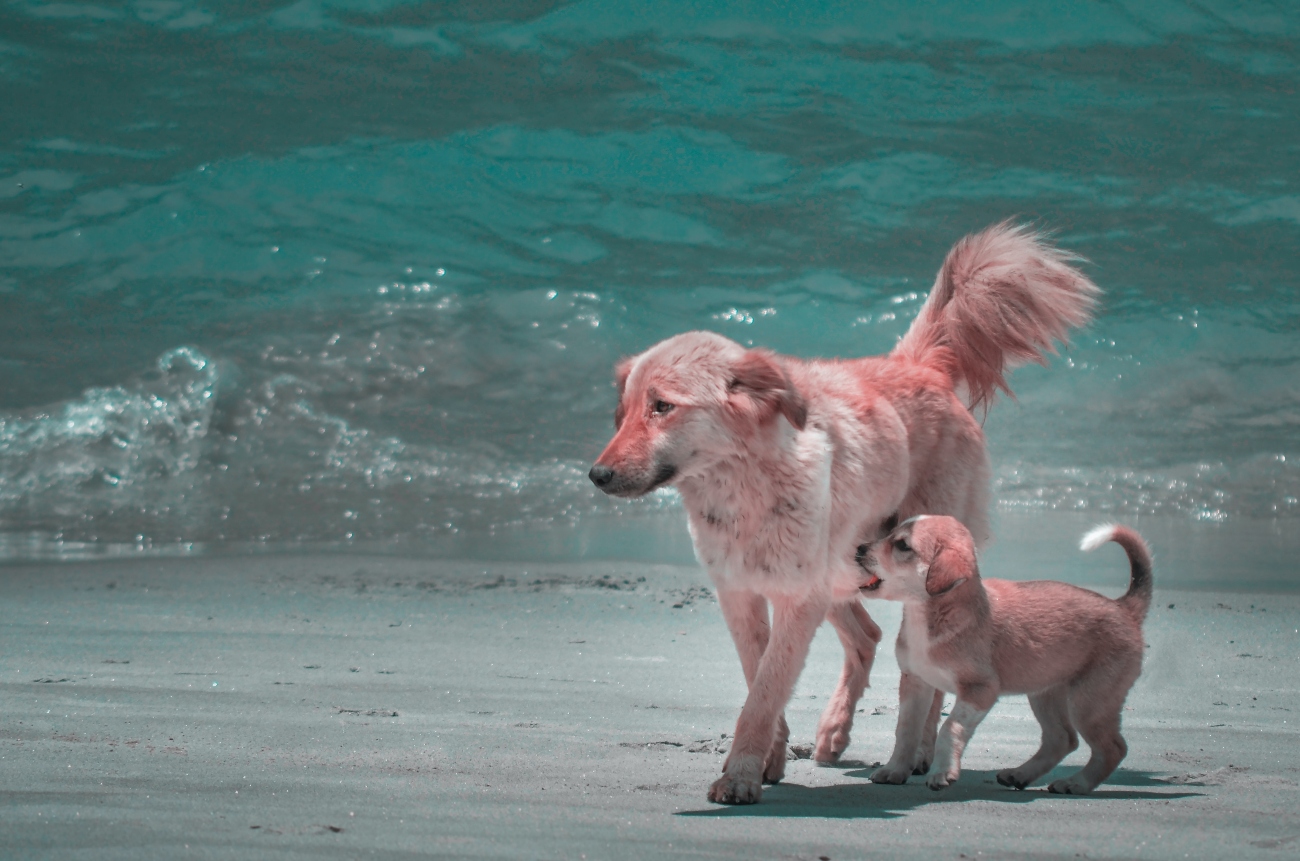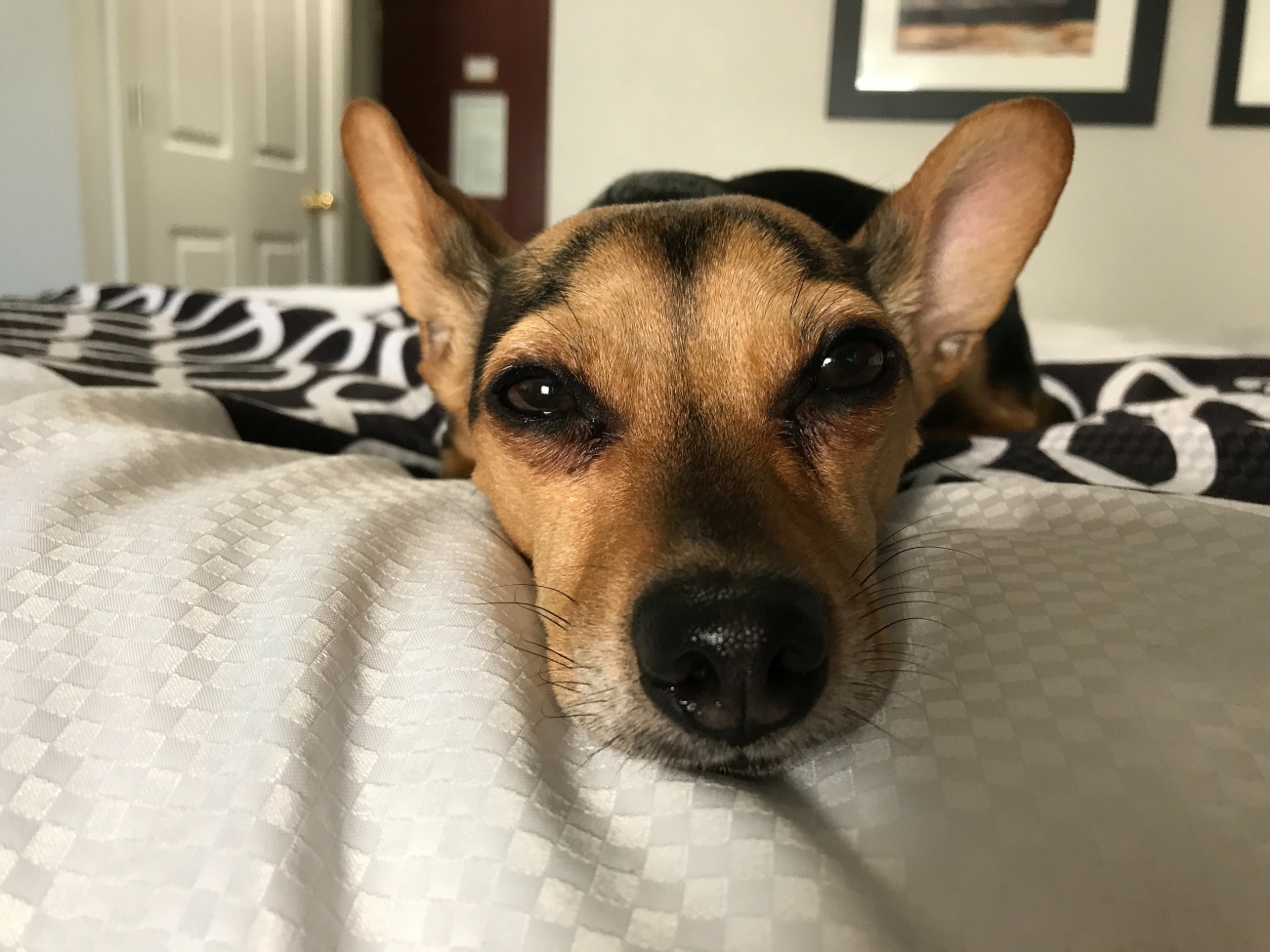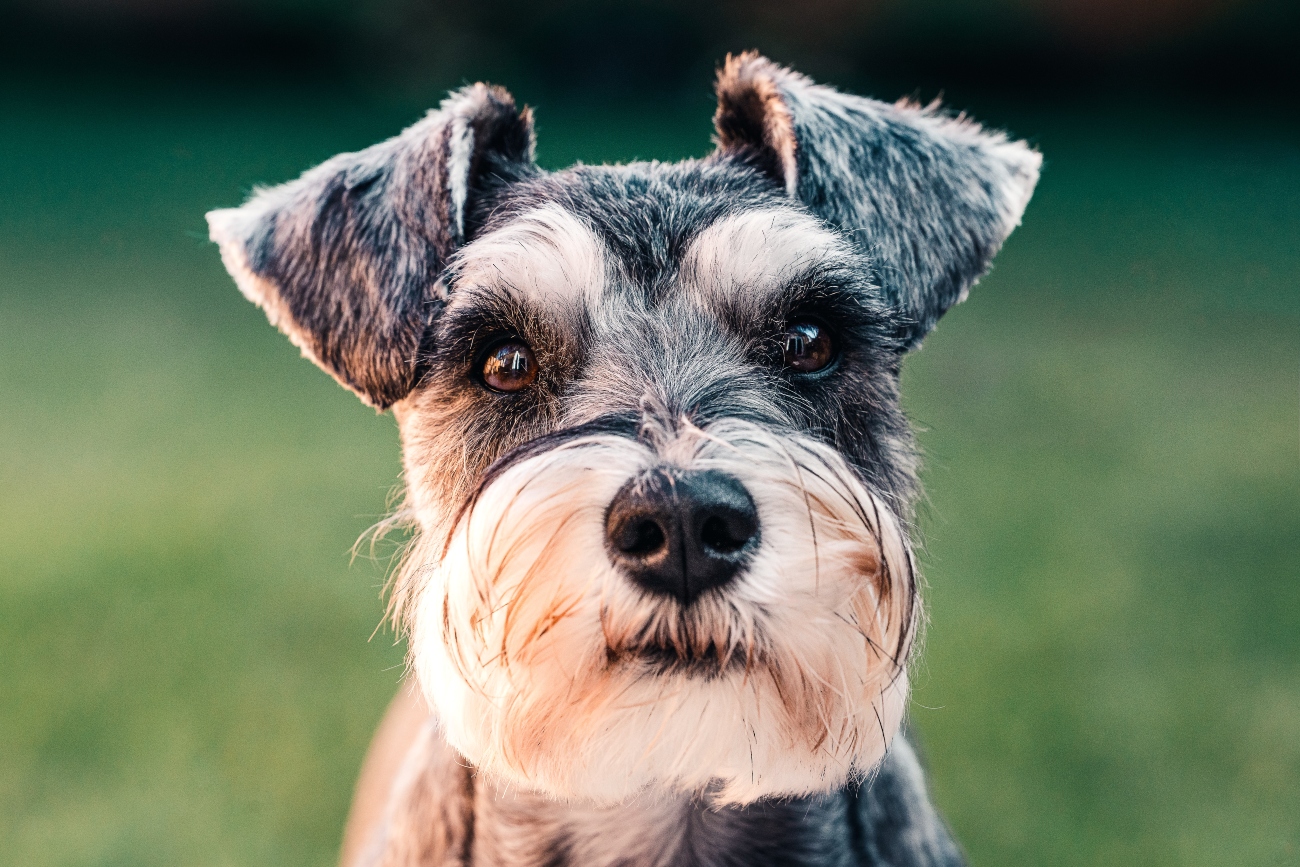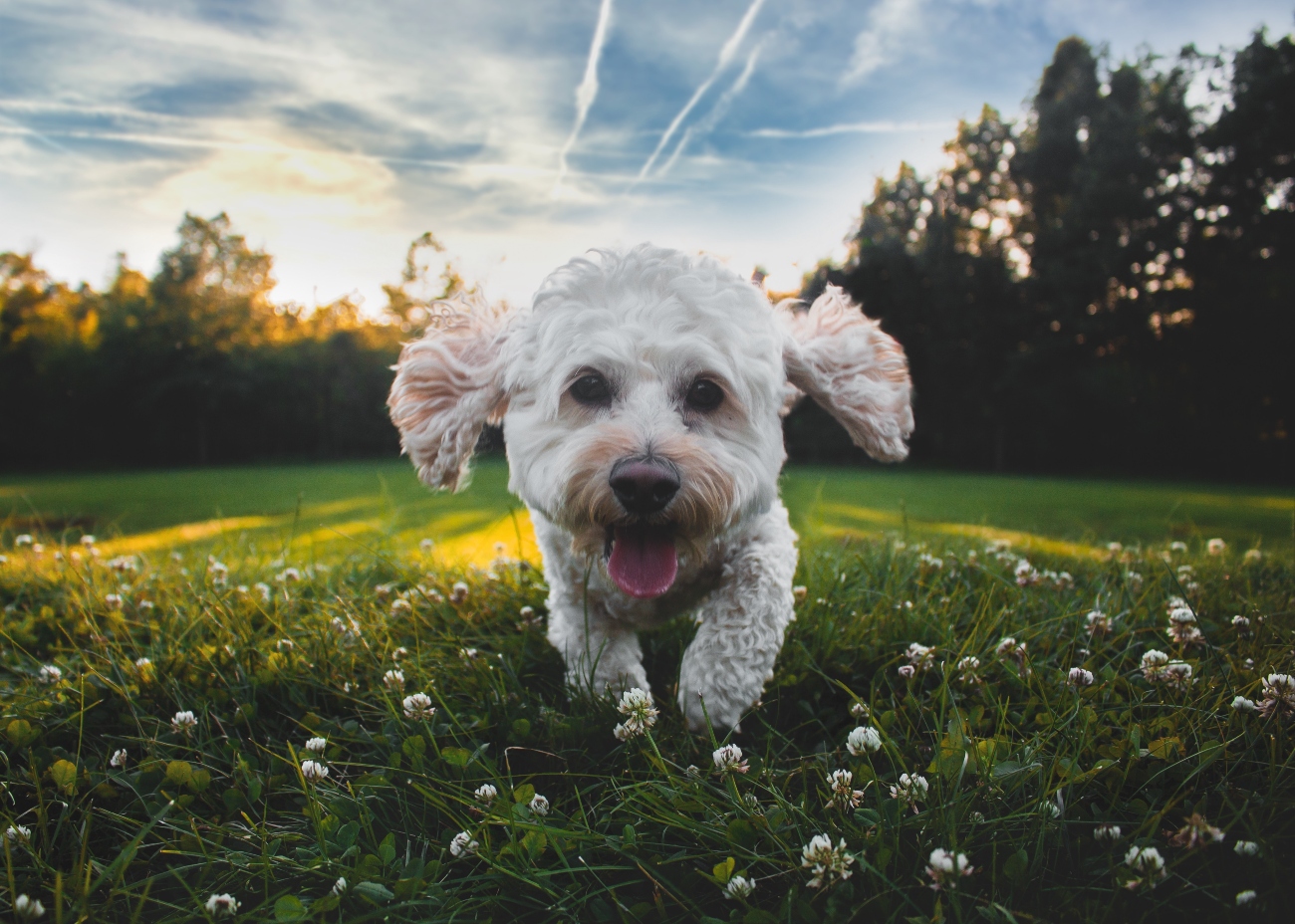
26 tips for introducing your older dog to a new puppy
4th March, 2022
Introducing a puppy into a household with an older dog can be a joyful experience for both pets. The puppy is delighted to have a big brother or sister, while the older canine relishes the company – and enjoys playing the role of mentor.
However, there is also the potential for these partnerships to go wrong. Your older dog may feel threatened by the new arrival. They may not be prepared to share – whether that's their home, their treats, your affection, or all of the above!
That said, there are definitely steps you can take to increase the probability of the two of them getting along.
Here are our top tips for introducing your older dog to a new puppy – and, we hope, setting in motion a lasting doggy friendship.
Remember to protect both your beloved old friend and your new arrival, with some pet insurance for older dogs and puppies respectively.

1. Make sure a new puppy is going to work for you (and your senior dog)
There's no doubt that introducing a new puppy into your home can be a very exciting time – as you probably know, from your current dog's first arrival in your lives! Naturally, you want to go through that joyous experience again – but before you do, it's worth taking a long look at whether a new puppy bounding around the house is going to be a positive move for your household. And, in particular, for the older dog in your lives.
Have a think about your dog's personality. Do you think they are likely to welcome a new arrival into their home, or might they feel resentful at this incomer encroaching on their space (and humans)? If they have an overall friendly, sociable disposition, you should be OK – but if they are inclined to be grumpy or aggressive around other dogs and/or new situations, you might want to pause and think about this a little longer.
An unfriendly older dog could easily frighten or bully the new puppy, and the latter could be affected for life – becoming nervous around other dogs and unable to have happy experiences with their fellow canines.
2. Make sure your current dog is physically up to a new playmate
A new pup will bring physical demands on your existing pet. So, think carefully if your older dog has any health conditions that might be aggravated by the sudden presence of an overactive ball of fun.
For instance, your dog may have back issues. This can be quite common in many breeds once they enter old age – Dachshunds, as we noted in our piece on this breed, are particularly prone to back problems as they age.
If your dog has back problems, a puppy may not be the best fit for them. After all, puppies do love to clamber over larger dogs, using them as a ladder to where they want to get to.
If you do have health concerns with your current dog, it's a good idea to make sure you have some pet insurance for older dogs. This will help with the costs of any medicines, consultations and even medical procedures that your beloved pet may need as they age.
Petwise also offers policyholders access to a 24-hour Vet Helpline, meaning that you can call for advice or reassurance whenever your dog's health is giving you cause for concern.
3. Consider any behavioural problems your older dog may have
If they are generally calm, happy and obedient, they may pass on their own good habits to the new puppy, and generally prove themselves a useful asset during puppy training.
However, if they have any behavioural issues or bad habits, these can all too easily get passed on from the wise older dog to the eager young learner.
So, if your old pooch is not especially well trained around the house, or has a tendency to bark excessively, they may pass these bad behaviours onto the new arrival. If you can, try to train any difficult characteristics out of your current dog before welcoming a new one into your home.
4. Choose the sex of your puppy carefully
You should also consider the sex of your new puppy. Sometimes male and female dogs get on better than two males. Ask your vet for advice on which sexes work best together.
5. Think about breeds
Just as you should consider the sex of your new puppy, you should also consider the size and breed. If your existing dog is large, they may unintentionally hurt a tiny breed of puppy during play. Again, ask your vet for advice on breeds that work best together.
6. Give your older dog some advance notice…
In the days before you pick up your new pup, ask the seller, breeder, or shelter manager if they can let you have something with the new puppy's scent on it. This will typically be a blanket or a towel from the pup's basket – something they've had close by them during those first few weeks.
Smells are hugely important to dogs. If you can give your older dog something with the puppy's scent before the latter arrives, this gives your dog time to get used to the new smell. Then, when that little pup does come bounding into the house, it's not an assault on your older dog's senses.
7…and do the same for your new pup
It’s also a good idea to do the same in reverse. Give your new pup a blanket that smells of your home so they can start to get used to smells that are associated with your house.
8. Make sure both dogs are up to date with their vaccinations
Young puppies still have very delicate immune systems, and as such they are vulnerable to any infections they come across. It's very important, therefore, that they have had all the vaccinations that they require at each developmental stage.
The same goes for your older dog. Their age may make them more vulnerable to certain conditions. Keeping up to date with vaccinations, for both puppies and adult dogs, is a very important part of dog ownership – right up there with sorting out some suitable pet insurance for older dogs and puppies.
Puppies are typically vaccinated at eight and 10 weeks, although this first round of vaccination can take place as early as four weeks. As such, it's quite possible that they will have their first round of vaccinations while they are still with their breeder, given that the minimum age at which puppies can leave their birth family is eight weeks. Check with your breeder, owner or shelter manager whether this first round has been done. The second dose is typically administered two to four weeks after the first.
These vaccinations will protect against things like:
- Kennel cough
- Leptospirosis
- Canine distemper
- Canine parvovirus
- Parainfluenza
9. Choose their first meeting place
Although the logical step might be to simply bring your new puppy home and let the dogs meet there, it's better – if you can – to be outside when they meet each other for the very first time.
This is advisable for two reasons. For one thing, the open space makes it easier for your older dog to get a little distance away, should they feel the need for a moment alone – the new puppy is likely to be quite boisterous and in their face, after all!
The second reason is that your older dog will feel less jealous and territorial outdoors than they would in your house.
Your garden can work well; a short walk near your home is also suitable. Make sure you select somewhere without lots of other dogs around, as your puppy will still be vulnerable to infections. The age of your older dog may also make them vulnerable here. Make sure that you are up to date with your pet insurance for older dogs just in case any mishaps occur.
10. Supervise this first meeting
For this first meeting, keep each dog on a lead and allow them to sniff and get to know each other at their own pace. If either dog becomes too boisterous or aggressive, simply take some time out. Keep them separate, or concentrate on your surroundings – the garden, the walk – for a while.

11. Make both dogs wear a lead when they first meet in the house
After they've had some time interacting outdoors, it's fine to let them both back in the house simultaneously. However, it's best to leave a lightweight lead on each of them, so that you can separate them with the minimum of fuss should the need arise.
12. Try a few walks together
If you can, bring a friend or member of the family along on these walks. That way, one of you can take the lead of each dog, allowing them to remain a little distance apart if they want or need to.
A walk like this will be the perfect distraction, allowing the two dogs to interact without any of the tensions and jealousies of home. They may also bond over the sights and smells they are investigating together!
13. Play training games
This is another great way to keep the two dogs busy and distracted while they get to know each other. You could run through some tricks or games that you know your older dog loves, while another handler tries out some similar activities with your puppy.
Intersperse the training with some regular breaks for sniffing and treats. And why not end with some (supervised) playtime, so the two dogs can relax and have fun together?
14. Don't leave the two dogs alone together
This is important in the first couple of weeks. You need an atmosphere of calm – and also of consistency. Your older dog’s regular routine of walks, food, sleep and downtime should not be disrupted by the new arrival.
15. Remove toys and food for their first moments at home together
Before you bring your new puppy home for the first time, place all food and toys out of reach. Your new pup will naturally want to come in and explore absolutely everything, and is likely to make a beeline for food and/or toys.
Your older dog may feel threatened by this new arrival. They may feel the need to protect 'their' things.
Called 'resource guarding', this aggressive protection of their space and assets is quite common behaviour in dogs when a potential rival is brought into the home. So, give the two of them time to have a sniff around each other and get to know each other, before introducing anything that they might fight over.
16. Provide opportunities for them to have time apart
We spoke above about the need for your older dog to have their own separate food and rest area, away from your new puppy, so that they can get some time alone whenever they need it.
Any other measures that you can introduce to separate them when necessary will also be helpful. For instance, a stair gate is a great way to separate them, so they each get a part of the house to themselves if they need to cool off for a while.
17. Make sure they've each got their own things
There will be much more harmony if both your new puppy and your adult dog each have their own bed, food and water bowl. Remember, it's in dogs' nature to be highly territorial, so don't allow for the possibility of your older dog becoming anxious or even aggressive by being forced to share any of their precious things.
18. Put each dog's essential items in a separate area
This is especially important in the first few days and weeks, while the two of them are getting to know each other.
19. Give both dogs age-appropriate food
While the temptation may be to simplify your life by giving both dogs the same food, in reality your growing pup and your older dog will have very different nutritional needs.
You should give them each the nutritional mix that's appropriate for their age and weight. You can read more about this in our article, ‘Can you feed an older dog puppy food?’
20. Give out treats fairly
Dogs love a treat, as we all know, and giving regular goodies to your older dog and puppy should reinforce the sense of fun that they're both getting. However, take care that treats don't become another battleground, with the two of them fighting over who gets what or how much.
21. Praise good behaviour
For this new household to work, you need good behaviour from both dogs. And a key way to reinforce that good behaviour is to praise both dogs when they're behaving calmly, sensibly and kindly.
22. Keep an eye on body language
Both dogs' body language, behaviour and general demeanour will give you plenty of clues as to whether the relationship is working or not. For example, do they seem happy to play with each other? Look out for their head going down and their tail end going up – a classic doggy 'let's play!' signal.
If your puppy starts licking your older dog's mouth and face, they're not being annoying – they're communicating submission. They'll typically roll on their back as well. All of this means, 'I understand you're top dog around here'!
On the other hand, listen out for any growls, whines or barks. These can be playful – but they can be threatening. Watch out for the body language accompanying them.
Your older dog may put up with being jumped on or having their ears nibbled for a while, but you should look out for the signs that they are starting to tire of it. These include:
- Staring
- Growling and snarling
- Raised fur on the back and neck
- Baring teeth
If your older dog does become confrontational, we've got some help in our piece on how to deal with an aggressive older dog.
23. Make sure you have pet insurance for older dogs – and puppies
Your two dogs are likely to need different forms of pet insurance, as they are at different stages of their lives with very different health concerns. If your older dog isn’t protected yet, contact Petwise. We specialise in pet insurance for dogs aged seven and over.
24. Call the Vet Helpline if you have a question
As a Petwise policyholder, whenever your older dog has a health complaint or behavioural issue that is causing you concern, you can call the 24-Hour Vet Helpline at any time for advice. All calls to this line are answered by registered veterinary nurses, all of whom have at least three years' practical veterinary experience.
25. Just remember to have lots of fun together
If all goes well and you follow these tips, your wise older dog and your playful new pup should strike up a great friendship together. Spend time together and with each dog in turn so they both get some alone time with you.

26. Start training early
While your older dog will train your pup over time in the ways of the household, you shouldn’t leave it all to them! Start puppy training classes early and make sure your young pup is exposed to as many new people and situations as possible.
Early socialisation will benefit your pup’s relationship with your older dog as well as new doggy friends they’ll make along the way.
Look after your old friend with pet insurance for older dogs
The arrival of a new puppy will be a wonderful, exciting time – but won't in any way diminish the love you have for your older dog. You want to keep looking after them, and ensuring that they are happy, healthy and loved, right throughout their old age.